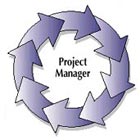Course duration
- 5 days
Course Benefits
- Install and configure PC system unit components and peripheral devices.
- Install, configure, and troubleshoot display and multimedia devices.
- Install, configure, and troubleshoot storage devices.
- Install, configure, and troubleshoot internal system components.
- Explain network infrastructure concepts.
- Configure and troubleshoot network connections.
- Implement client virtualization.
- Support and troubleshoot laptops.
- Support and troubleshoot mobile devices.
- Support and troubleshoot print devices.
- Support operating systems.
- Install, configure, and maintain operating systems.
- Maintain and troubleshoot Microsoft Windows.
- Configure and troubleshoot network connections.
- Manage users, workstations, and shared resources.
- Implement physical security.
- Secure workstations and data.
- Troubleshoot workstation security issues.
- Support and troubleshoot mobile operating systems and applications.
- Implement operational procedures.
Course Outline
- Windows Operating System Compatibilities and Features
- Idenitify Common Operating Systems
- Troubleshooting Methodology
- Use Windows Features and Tools
- Manage Files in Windows
- Manage Disks in Windows
- Manage Devices in Windows
- Installing and Configuring PC Components
- Use Appropriate Safety Procedures
- PC Components
- Common Connection Interfaces
- Install Peripheral Devices
- Installing, Configuring, and Troubleshooting Display and Multimedia Devices
- Install and Configure Display Devices
- Trouble shooting Display Devices
- Install and Configure Multimedia Devices
- Installing, Configuring, and Troubleshooting Storage Devices
- Install System Memory
- Install and Configure Mass Storage Devices
- Install and Configure Removable Storage
- Configure RAID
- Troubleshoot Storage Devices
- Installing, Configuring, and Troubleshooting Internal System Components
- Install and Upgrade CPUs
- Configure and Update BIOS/EUFI
- Install Power Supplies
- Troubleshoot Internal System Components
- Configure a Custom PC
- Installing, Configuring, and Maintaining Operating Systems
- Configure and Use Linux
- Configure and Use macOS
- Install and Upgrade Operating Systems
- Maintain OSs
- Maintaining and Troubleshooting Microsoft Windows
- Install and Manage Windows Applications
- Manage Windows Performance
- Troubleshoot Windows
- Network Infrastructure Concepts
- Wire Networks
- Network Hardware Devices
- Wireless Networks
- Internet Connection Types
- Network Configuration Concepts
- Network Services
- Configuring and Troubleshooting Networks
- Configure Network Connection Settings
- Install and Configure SOHO Networks
- Configure SOHO Network Security
- Configure Remote Access
- Troubleshoot Network Connections
- Install and Configure IoT Devices
- Managing Users, Workstations, and Shared Resources
- Manage Users
- Configure Shared Resources
- Configure Active Directory Accounts and Policies
- Implementing Client Virtualization and Cloud Computing
- Configure Client-Side Virtualization
- Cloud Computing Concepts
- Security Concepts
- Logical Security Concepts
- Threats and Vulnerabilities
- Physical Security Measures
- Securing Workstations and Data
- Implement Security Best Practices
- Implement Data Protection Policies
- Protect Data During Incident Response
- Troubleshooting Workstation Security Issues
- Detect, Remove, and Prevent Malware
- Troubleshoot Common Workstation Security Issues
- Supporting and Troubleshooting Laptops
- Use Laptop Features
- Install and Configure Laptop Hardware
- Troubleshoot Common Laptop Issues
- Supporting and Troubleshooting Mobile Devices
- Mobile Device Types
- Connect and Configure Mobile Device Accessories
- Configure Mobile Device Network Connectivity
- Support Mobile Apps
- Secure Mobile Devices
- Troubleshoot Mobile Device Issues
- Installing, Configuring, and Troubleshooting Print Devices
- Maintain Laser Printers
- Maintain Inkjet Printers
- Maintain Impact, Thermal, and 3D Printers
- Install and Configure Printers
- Troubleshoot Print Device Issues
- Install and Configure Imaging Devices
- Implementing Operational Procedures
- Environmental Impacts and Controls
- Create and Maintain Documentation
- Use Basic Change Management Best Practices
- Implement Disaster Prevention and Recovery Methods
- Basic Scripting Concepts
- Professionalism and Communication
Class Materials
Each student will receive a comprehensive set of materials, including course notes and all the class examples.
Experience in the following is required for this CompTIA class:
- End-user skills with Windows-based personal computers, including the ability to: browse and search for information on the Internet; start up, shut down, and log on to a computer and network; run programs; and move, copy, delete, and rename files in Windows Explorer.
- Basic knowledge of computing concepts, including the difference between hardware and software; the functions of software components, such as the operating system, applications, and file systems; and the function of a computer network.
Instructor-led courses are offered via a live Web connection, at client sites throughout Europe, and at our Geneva Training Center.

 InterSource offers live instructor-led courses on all important operations-related skills, including Communications, Customer Service, Human Resources, Marketing, Team Building and Writing
InterSource offers live instructor-led courses on all important operations-related skills, including Communications, Customer Service, Human Resources, Marketing, Team Building and Writing